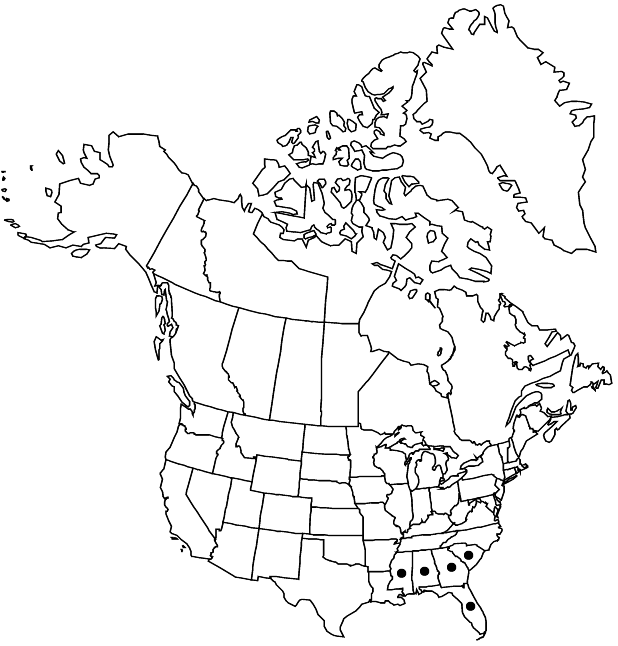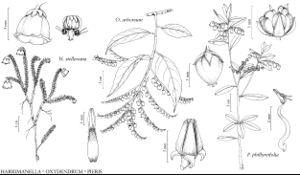Difference between revisions of "Pieris phillyreifolia"
in A. P. de Candolle and A. L. P. P. de Candolle, Prodr. 7: 599. 1839 ,.
FNA>Volume Importer |
FNA>Volume Importer |
Revision as of 20:31, 24 September 2019
Shrubs or vines, to 1 m, climbing to 10 m within fibrous bark of Taxodium or Chamaecyparis by means of flattened rhizomes that, at intervals, give rise to emergent branches; twigs multicellular stipitate-glandular-hairy, otherwise sparsely to moderately unicellular-hairy. Stems ± terete. Leaf blades ovate, elliptic, or slightly obovate, (1–)2–6(–7) × (0.3–)0.3–2(–2.7) cm, base narrowly cuneate to rounded, margins obscurely to clearly toothed, especially near apex, revolute, apex acute to rounded. Inflorescences axillary racemes, from near stem apex; bracteoles near apex to middle of pedicel. Flowers: calyx lobes 3.5–5 × 1–1.5 mm; corolla cylindric-urceolate, weakly 5-ridged, 6–8(–8.5) × 4–5 mm; filaments geniculate, 4–6 mm, glabrous; style strongly sunken into ovary apex. Capsules subglobose, 2.5–4 × 3.5–5.3 mm, glabrous; placentae central to nearly basal. Seeds angular-ovoid to obovoid or narrowly conic, not winged; testa cells isodiametric.
Phenology: Flowering winter–spring.
Habitat: Taxodium, Chamaecyparis, or broad-leaved swamps, wet depressions in pine forests
Elevation: 0-100 m
Distribution

Ala., Fla., Ga., Miss., S.C.
Discussion
Pieris phillyreifolia is the only viny member of the Ericaceae in the United States; like P. cubensis Small of Cuba and P. swinhoei Hemsley of China, it has more or less isodiametric testa cells; it has been placed in sect. Phillyreoides Bentham & Hooker f.
Selected References
None.
